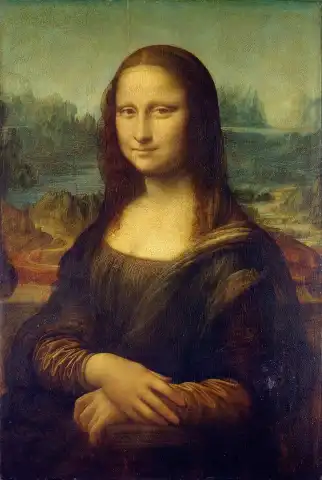

Hand painted reproductions of Karel Dujardin
Karel Dujardin: A Prominent Dutch Baroque Painter of Animals and Landscapes
Early Life and Education
Karel Dujardin (1626–1678) was a Dutch Baroque painter, known for his exceptional skills in portraying animals, particularly horses, as well as his landscapes and genre scenes. He was born in Amsterdam, Netherlands, in 1626, and little is known about his early years. It is believed that he received his artistic training under the guidance of Pieter de Grebber, a well-known Dutch painter of the period.
Dujardin’s early exposure to the artistic environment of Amsterdam helped him develop his craft. During the 1640s, he moved to Rome, where he became part of the vibrant artistic community and absorbed the influences of Italian Baroque painting. His time in Italy was a turning point in his career, shaping his artistic direction and reinforcing his love for landscapes and animal subjects.
Artistic Style and Development
Dujardin’s artistic style was deeply rooted in the Baroque tradition, particularly known for its vivid realism and dramatic use of light and shadow. He was influenced by the work of prominent artists such as Nicolas Berchem, Salvator Rosa, and Gerrit Dou, incorporating their techniques into his own compositions. Dujardin’s mastery of light and texture allowed him to create animals and landscapes with remarkable detail and a sense of life.
Although he painted various subjects, Karel Dujardin is best remembered for his depictions of horses and other animals. His animal portraits displayed an exceptional level of anatomical accuracy and emotional depth, capturing the character and movement of the creatures with an almost photographic quality. His works also included Italianate landscapes, which combined the natural beauty of the Italian countryside with a touch of the sublime.
Themes and Significance
Dujardin’s art is often associated with the depiction of animals, a genre that was highly popular in the Dutch Baroque period. His ability to portray horses with elegance and realism was especially admired, and his works contributed to the growing genre of animal portraiture. His depictions of horses were not just studies of anatomy but also expressions of grace and strength, often set against dramatic landscapes or historical contexts.
His landscapes, often infused with a classical influence from his time in Italy, were typically set in lush, expansive settings, with large skies and rolling hills. Dujardin's paintings often combined the beauty of nature with the activity of animals, such as horses, grazing or being ridden. His use of light and shadow lent his landscapes a sense of depth and movement, making them more than mere scenic backdrops but integral parts of his compositions.
Dujardin’s works are significant because they reveal his ability to merge the realism of Dutch painting with the grandeur of Baroque aesthetics. His ability to create movement within the composition, whether in the form of a horse in motion or the interplay of light across a landscape, set him apart from other artists of his time.
Achievements and Influence
Karel Dujardin was highly regarded in the artistic community of his time. His works were exhibited in prominent galleries across Europe, and he was considered one of the leading animal painters of the Dutch Baroque era. His time in Rome, where he interacted with leading artists and became familiar with Italian artistic trends, elevated his reputation, especially for his ability to blend Dutch realism with Italianate landscapes.
Although he did not achieve the same level of fame as some of his contemporaries, Dujardin’s work was highly sought after by collectors of the period. His success in both animal portraiture and landscape painting helped establish him as a key figure in the artistic circles of Amsterdam and beyond.
Dujardin’s influence extended to future generations of artists who sought to master the depiction of animals and nature. His works contributed to the development of the animal genre within Dutch art and were admired for their technical precision and emotional expression.
Legacy
Karel Dujardin’s legacy lies in his ability to combine the Dutch tradition of meticulous detail with the grandeur of Baroque painting. His animal portraits and landscapes remain highly regarded for their technical skill, emotional depth, and naturalistic portrayal of animals and nature. Dujardin’s contributions to Dutch art, particularly in the genre of animal painting, left a lasting impact on subsequent generations of artists.
Today, his works are housed in private collections and museums around the world, where they continue to be admired for their exceptional quality and realism. Dujardin’s legacy is celebrated by collectors and art enthusiasts who appreciate his mastery of animal portraiture and his ability to create atmospheric, dynamic landscapes.
Where to Find Reproductions of Karel Dujardin’s Art
For those wishing to bring the beauty of Karel Dujardin’s detailed animal portraits and landscapes into their homes, high-quality oil painting reproductions are available. These reproductions offer a chance to experience the mastery of his work, allowing collectors to enjoy his stunning depictions of nature and animals in their own space.
Imagine owning an original-style painting by one of the greatest artists in history. At POD, we offer you the chance to make this dream a reality. Each canvas is faithfully reproduced down to the smallest detail, allowing you to experience the beauty of the artist’s vision in your own home.
Our reproductions are crafted by experienced painters using the finest materials and time-honored methods. We are committed to delivering works of exceptional quality that will inspire and bring joy to your family for generations to come.






